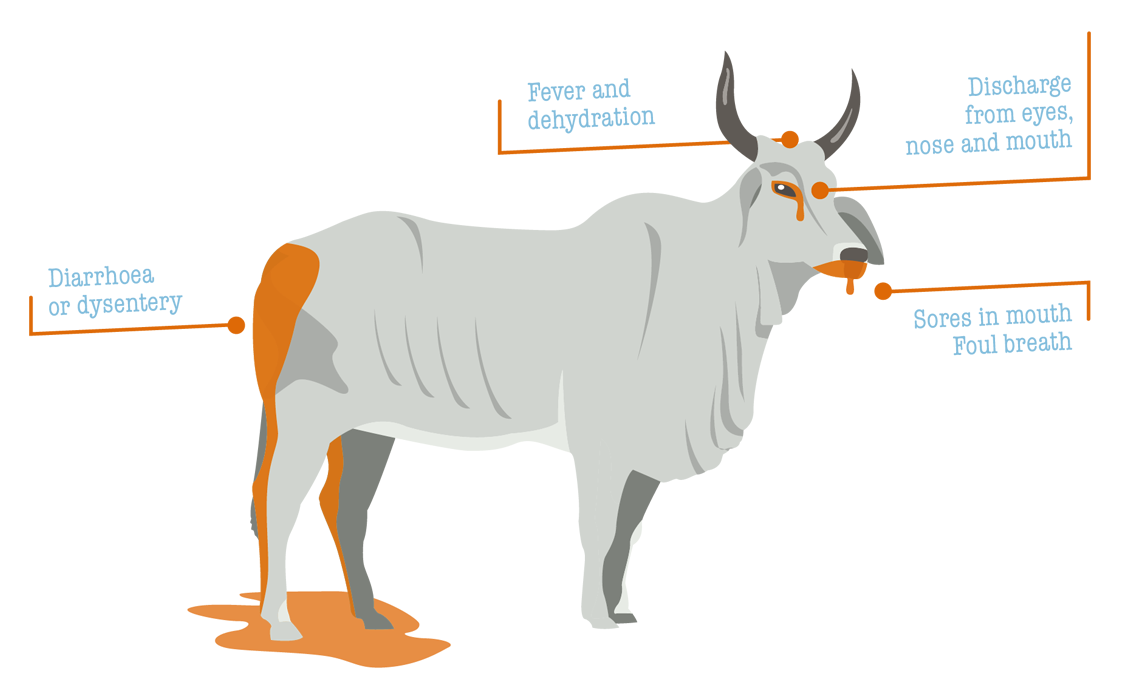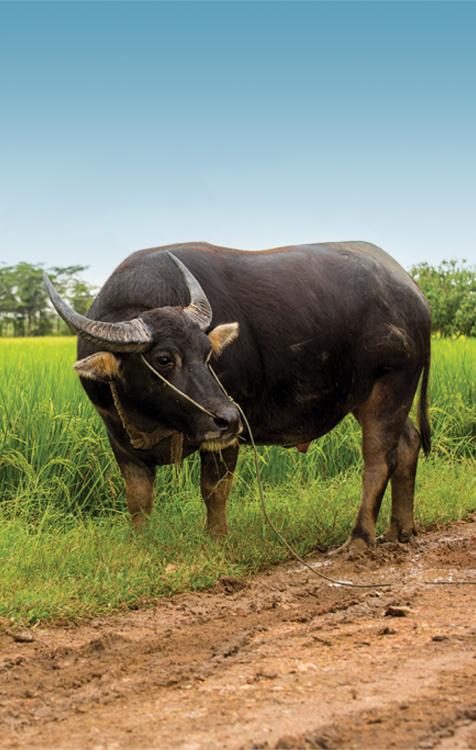
Although rinderpest virus no longer circulates amongst animals, the world remains vulnerable to a reoccurrence of the disease due to biological samples and materials which may contain the virus still being stored in premises across the world.
As a key player in preserving animal and human health, you work with passion to protect your country from any disease outbreak.
Making sure that you take all possible actions to recognize the clinical signs and prevent a rinderpest outbreak is therefore crucial to protect animal populations and livelihoods in your country and in the rest of the world.
Recognize the disease
In cattle, the most susceptible species, classical signs of the disease include fever, erosive lesions in the mouth, discharge from the nose and eyes, profuse diarrhoea and dehydration, often leading to death within 10 to 15 days. In other species, rinderpest may show milder clinical signs.

 Classic form, post-mortem:
Classic form, post-mortem:• GI tract: Necrosis, oedema, erosions
• Colon: linear haemorrhages (‘zebra striping’)
• Lymph nodes: swollen, oedema
• Lungs: emphysema, pneumonia
 Differential diagnosis: Be careful, rinderpest could look like:
Differential diagnosis: Be careful, rinderpest could look like:• Stomatitis-enteritis syndrome
• Foot and mouth disease (FMD)
• Peste-des-petits-ruminants (sheep and goat plague)
• Haemorrhagic Septicaemia
• Bovine Viral Diarrhoea
• Contagious Bovine Pleuropneumonia (CBPP)
Since rinderpest has similar clinical signs to other diseases (or syndromes), its diagnosis may occur too late; therefore, vigilance and measures to prevent a reoccurrence of the disease remain the best way to keep the world free from rinderpest.
 Know what to do if you suspect a case of rinderpest
Know what to do if you suspect a case of rinderpest
- If you see signs of rinderpest report it immediately to the National Veterinary Authorities for further follow up to rule out rinderpest through laboratory diagnosis.
- Upon detection of a suspected case, the National Veterinary Authorities should implement their national contingency plan immediately.
- If the presence of rinderpest cannot be ruled out, samples should be collected and dispatched to one of the appointed Reference Laboratories for rinderpest, for confirmation and identification of its source.
- A full epidemiological investigation should be conducted simultaneously to provide supporting information and to assist in identifying the possible source and spread of the virus.
- If the case has rinderpest virus specific antibodies, it is considered to be a suspect case, and should be reported immediately to the OIE.
More information on www.oie.int/rinderpestcode
If a case is identified, measures should be put in place to control rinderpest by National Veterinary Authorities that may include:
• Movement control;
• Vaccination;
• Slaughter of infected animals and those in contact with the infected animals (stamping out policy);
• Safe disposal of carcasses and infective material;
• Sanitation and disinfection.




